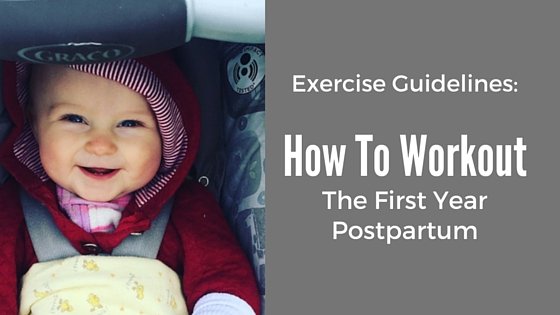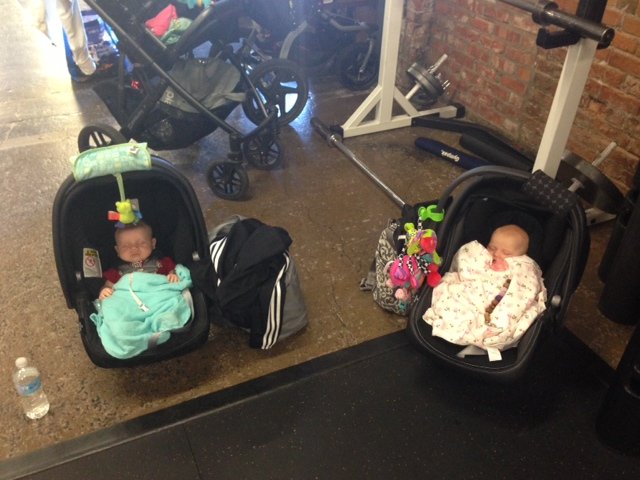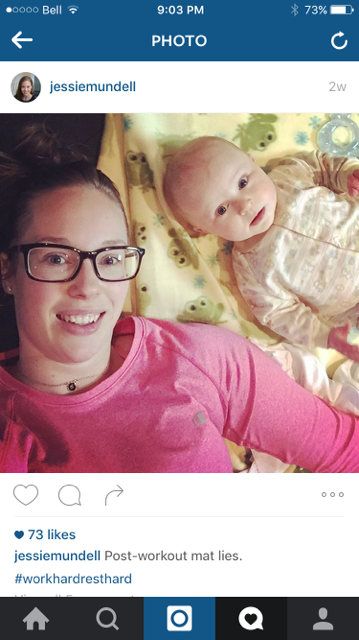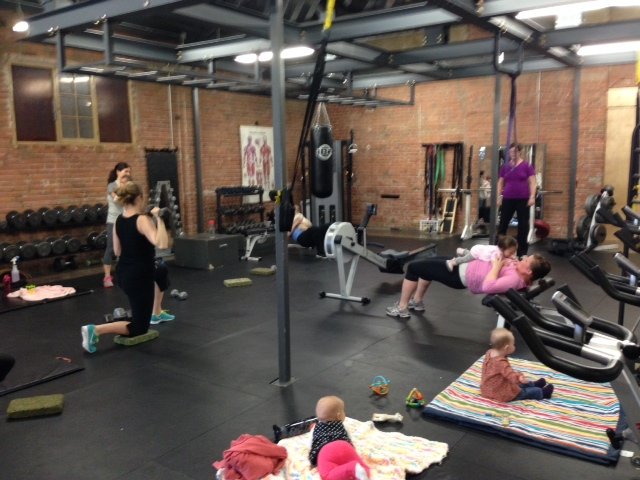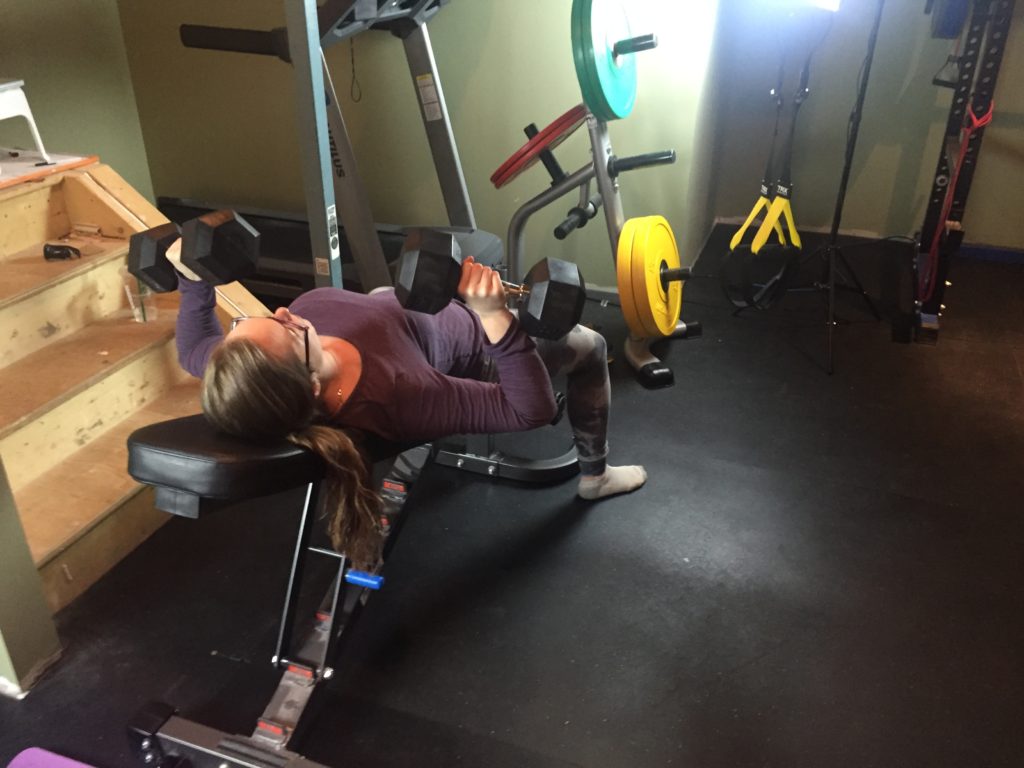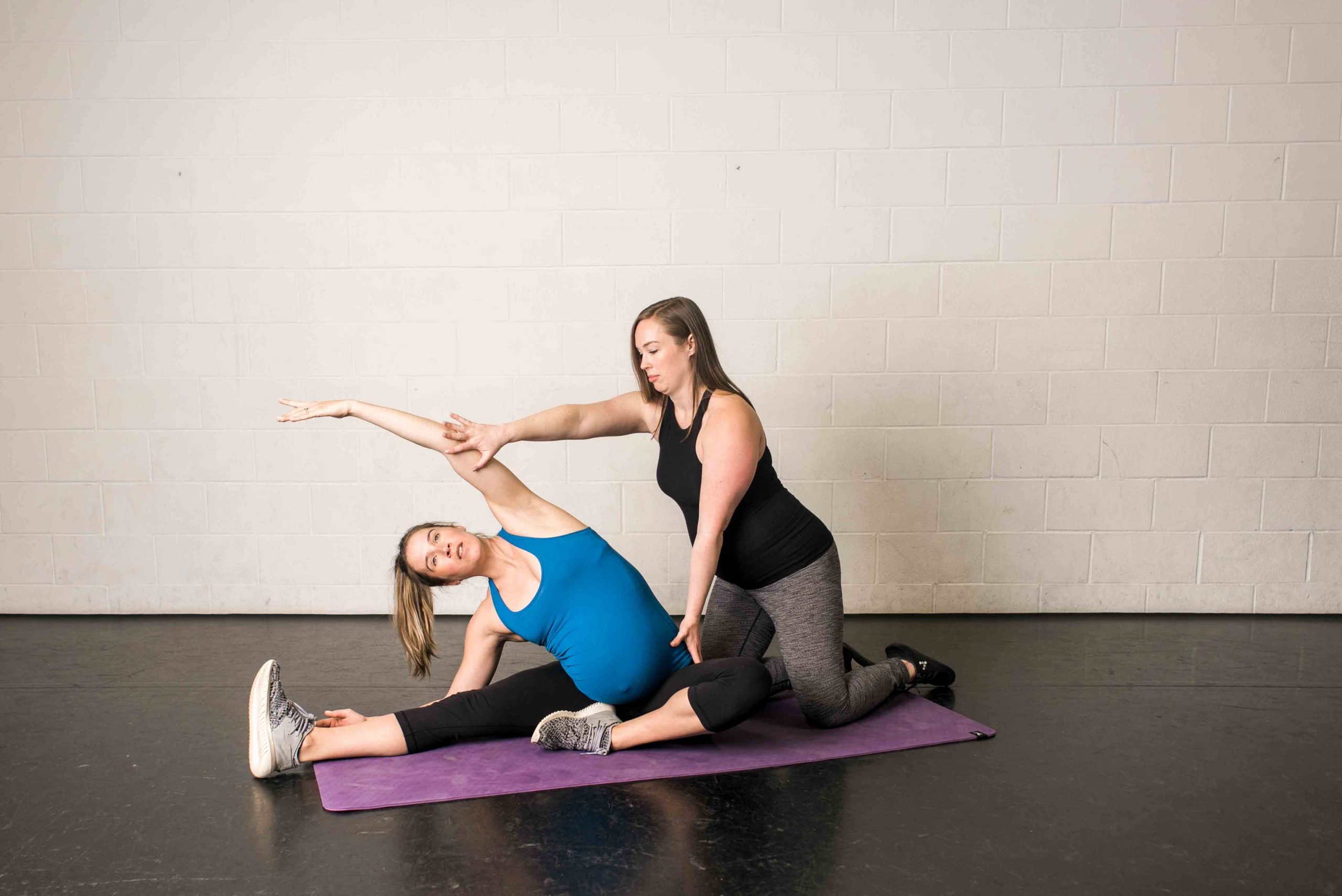This is the system I use to plan the entire first year of postpartum workouts for moms.
From my experience training hundreds of new and experienced moms, I believe these are the safest and most effective guidelines to healing the body and returning to exercise.
You’ll want to read this article IF:
• You’re pregnant now or might be in the future
• You have a baby
• You’re beyond 1-year postpartum and now beginning to return to regular exercise
• You are a fitness professional and coach pregnant women or moms
• You are a health professional who works with pregnant women or moms and you’re asked for general health/exercise advice
I won’t lie to you – I think differently than MANY other trainers who work with women.
This is not going to be a “how to get you body back as soon as possible” type of blog.
It will teach you how to ensure your body functions well, is strong, and can handle more intense exercise progressively. If that jives with you, keep reading.
0-3 Months Postpartum:
Little babies hanging while moms work on restoring their cores and floors through a strength training workout.
Overview and Main Factors to Focus On:
This section is incredibly important and, unfortunately, often overlooked.
The main focus for exercise is on restoring function and strength to your core and pelvic floor, being pain-free, and feeling good (these are goals of every stage, actually).
My clients in the To Pregnancy & Beyond online fitness program go straight into the Core + Floor Restore program or Core + Floor Restore for C-Section program.
These are 8-week programs that moms use after birth to help re-gain strength and good tone in the abdominals, pelvic floor muscles, glutes, and back, and to help heal diastasis recti.
For the first month to 6 weeks (or more), I recommend resting as much as possible. This is not the time to return to any intense exercise. It doesn’t matter how much you exercised in pregnancy.
That being said, I believe you absolutely can start doing exercises and gentle workouts before your 6-week check-up with your healthcare provider if you are feeling well and don’t see an increase in any symptoms (e.g. bleeding) after.
As long as you follow these guidelines!
You can get back into regular, leisurely walking and basic strength training (using your bodyweight, resistance bands, and light weights). I would wait 1-3 weeks before adding your restorative core exercises in and 4-weeks before adding strength training back in.
I recommend you avoid any high intensity work, plyometrics, and running. For how long? More to come on that topic below!
Pay good attention to your alignment and posture, HOW YOU ARE FEELING, and begin pelvic floor physio (book an appointment for 4-8 weeks postpartum or anytime if you’re further postpartum).
The strength training programs my clients do (and that I have followed postpartum – the exact workouts) are highly specialized to take the pressure off the core and floor, yet workout in a way that allows the body to be appropriately challenged and recover function.
Strength Training Guidelines:
• 1-2 days per week
• 10-30 minutes per session
• Intensity level: 4-5/10
Cardio Guidelines:
• Walking/swimming/gentle biking
• up to 7 days per week (very leisurely and gentle – not sweating a ton, not breathless, not with a high heart rate. SLOWLY build this up to daily walking. This is what I want you to consider the priority in terms of any cardio type workouts)
• 10-30 minutes per session
• Intensity level: 4-5/10
4-6 Months Postpartum
Workout time!
Overview and Main Factors to Focus On:
Keep in mind with the following guidelines I’m going to make some assumptions in order to give you the best advice I possibly can. The guidelines below are given assuming you have followed the guidelines from 0-3 months.
Once you reach this stage, you have developed a solid base of strength and endurance in the core and pelvic floor. You are using effective techniques and form to lift your baby and lift weights.
Your diastasis recti is healing well, you have been assessed by pelvic floor physio who agrees the body is in good working order.
If the above guidelines are met, then at this point we build on and exercising can get a bit more exciting again.
For my clients we start to add back in:
• Deadlifts (light)
• Barbell back squats (light)
• Incline front planks and pushups (hands raised up)
• Pull-ups/chin-ups (assisted)
If you are NOT breastfeeding, your diastasis is well healed, you’re not in pain, your pelvic floor is in great condition and you’ve seen pelvic floor physio and they’ve cleared you for running, you may begin your return to running (enough disclaimers for you?).
More information below on how I recommend you structure this.
Strength Training Guidelines:
• 2-3 days per week
• 20-40 minutes per session
• Intensity level: 5-6.5/10
Cardio Guidelines:
• Walking, swimming, biking, rower
• up to 7 days per week of light/leisurely walking and moving your body (this is your cardio exercise priority)
• 1-2 days per week as more moderate type cardio where you’re pushing your heart rate more, sweating more, a bit more breathless
• 15-30+ minutes (as much as is enjoyable, you have time for, and feels good on your body)
• Intensity level: 5-6.5/10
— OPTIONAL: Higher intensity intervals
• I recommend incline interval walking on a treadmill/hill outdoors, biking, rower
• 1-2 days per week
• 15-30 seconds work during the higher intensity interval, followed by 30-60 seconds rest
• 10-15 minutes total per session
• Intensity level: 5-6.5/10
— OPTIONAL: Running Guidelines (if you have met all the criteria above):
• I recommend starting with interval type work
• 1-2 days per week
• 15-20 seconds of running with a 45 seconds – 60 seconds walking rest, add 1-2 running intervals every other week
• 10-15 minutes total per session
• Intensity level: 5-6.5/10
7-9 Months Postpartum
Overview and Main Factors to Focus On:
Again, these recommendations are given under the assumption that all is well with your core and floor, and you’ve been building your strength back up slowly + steadily between months 0-6.
At this point, the focus of strength training workouts are still full body (to be honest, they always are in my workout programs because #momlife and limited time).
However, we now start to build in a bit more intensity into the strength training workout. For example, the last circuit of the workout is more of a short “finisher” and metabolically demanding.
In this phase you can add a bit more weight to exercises if you’re feeling strong and comfortable.
Strength Training Guidelines:
• 2-4 days per week
• 20-40 minutes per session
• Intensity level: 6-7/10
Cardio Guidelines:
• Walking, swimming, biking, rower
• up to 7 days per week of light/leisurely walking and moving your body (this is your cardio exercise priority)
• 1-2 days per week as more moderate type cardio where you’re pushing your heart rate more, a bit more breathless (hilly walking, hiking, biking, etc).
• 15-30+ minutes (as much as is enjoyable, you have time for, and feels good on your body)
• Intensity level: 4-7/10
— OPTIONAL: Higher intensity intervals
• If you’re doing interval training, I recommend incline interval walking on a treadmill/hill outdoors, or on a bike, rower, etc.
• 1-2 days per week
• 15-30 seconds work during the higher intensity interval, followed by 30-60 seconds rest
• 10-20 minutes total per session
• Intensity level: 6-7/10
— OPTIONAL: Running Guidelines (if you have met all the criteria above):
• If short intervals have been feeling good (NO PAIN, no “is this normal/not normal in my body?” feelings), then longer steady state running might be right for you
• You can slowly increase your interval of running time longer, as long as it continues to feel good on your body, still walking when you need to
• 1-2 days per week
• 15-30 minutes per session
• Intensity level: 6-7/10
10-12 Months Postpartum (and Beyond!)
Overview and Main Factors to Focus On:
I consider the first year postpartum to still be very early postpartum, especially if you are breastfeeding. Keep that in mind!
You might be feeling more like you for the first time in a long time and that can feel really, really nice. Your workouts might be looking more like they used to and you feel a bit more settled into a workout groove (don’t worry if this is not how you feel!).
If you’ve not been to the pelvic floor physio since the early months postpartum I recommend another internal assessment around the 1 year mark just to ensure that things are still functioning well.
If all is well, you can continue to slowly dial up the intensity of your workouts if that’s something you’re interested in. Remember that you don’t have to feel like you’re totally spent after a workout or be terribly sore after a workout for it to be effective.
Challenging yourself in exercise is great but not to the point where you feel exhausted and achey for hours and days afterwards. Especially when you’re chasing after your almost-toddler now!
Strength Training Guidelines:
• 2-4 days per week
• 20-45 minutes per session
• Intensity level: 6-8/10
Cardio Guidelines:
• Walking, swimming, biking, rower
• up to 7 days per week of light/leisurely walking and moving your body (this is your cardio exercise priority)
• 1-2 days per week as more moderate type cardio where you’re pushing your heart rate more, a bit more breathless (hilly walking, hiking, biking, etc).
• 15-30+ minutes (as much as is enjoyable, you have time for, and feels good on your body)
• Intensity level: 4-7/10
— OPTIONAL: Higher intensity intervals
• If you’re doing interval training, I recommend incline interval walking on a treadmill/hill outdoors, or on a bike, rower, etc.
• 1-2 days per week
• 15-30 seconds work during the higher intensity interval, followed by 30-60 seconds rest
• 10-20 minutes total per session
• Intensity level: 6-8/10
— OPTIONAL: Running Guidelines (if you have met all the criteria above):
• If short intervals have been feeling good (NO PAIN, no “is this normal/not normal in my body?” feelings), then longer steady state running might be right for you
• You can slowly increase your interval of running time longer, as long as it continues to feel good on your body, still walking when you need to
• 1-2 days per week
• 15-30 minutes per session
• Intensity level: 6-8/10
A note on yoga and pilates:
You can incorporate these activities into your routine. Please be sure your instructor is well educated in diastasis recti, pelvic floor function, pelvic organ prolapse, and in general, postpartum recovery.
A note on stretching, mobility exercises, and foam rolling:
Great to do daily from as early postpartum as you feel like it!
A note on baby wearing workouts:
Baby wearing is wonderful and often a necessity of baby life! Just be certain that it feels good on your body. If you feel any heaviness, pressure, bulge-y-ness in your pelvic floor, pelvic or back pain take baby down if you can, or at least sit down.
A note on running:
Personally, I’m unsure if I’ll be doing any regular sprinting, running, plyometrics, or jumping in my workouts until I’ve stopped breastfeeding. That’s my own personal preference. It is suggested that it could take 3+ months after breastfeeding for the body’s connective tissues to return to pre-pregnancy density.
How do you know when you could return to running?
• In general, I would recommend waiting at least 4-6 months to start running (I KNOW! And honestly, 4 months is super early, in my opinion)
• Your diastasis recti is healed well
• Your pelvic floor is functioning at *top notch* capacity
• No incontinence
• No pelvic or back pain
• No pelvic organ prolapse, or it’s well managed and your pelvic floor physio is confident running with not increase your symptoms
• You love running just to run. It makes you feel like you. It’s your FAVE 🙂
I truly hope that’s helpful. Know that you can do so, so much safe exercise postpartum. You’re not restricted, we just have to plan smart. Any old exercise program is NOT going to do the trick.
To be honest, most exercise programs that are simply designed for women are not specific enough for postpartum exercise training.
Jess

